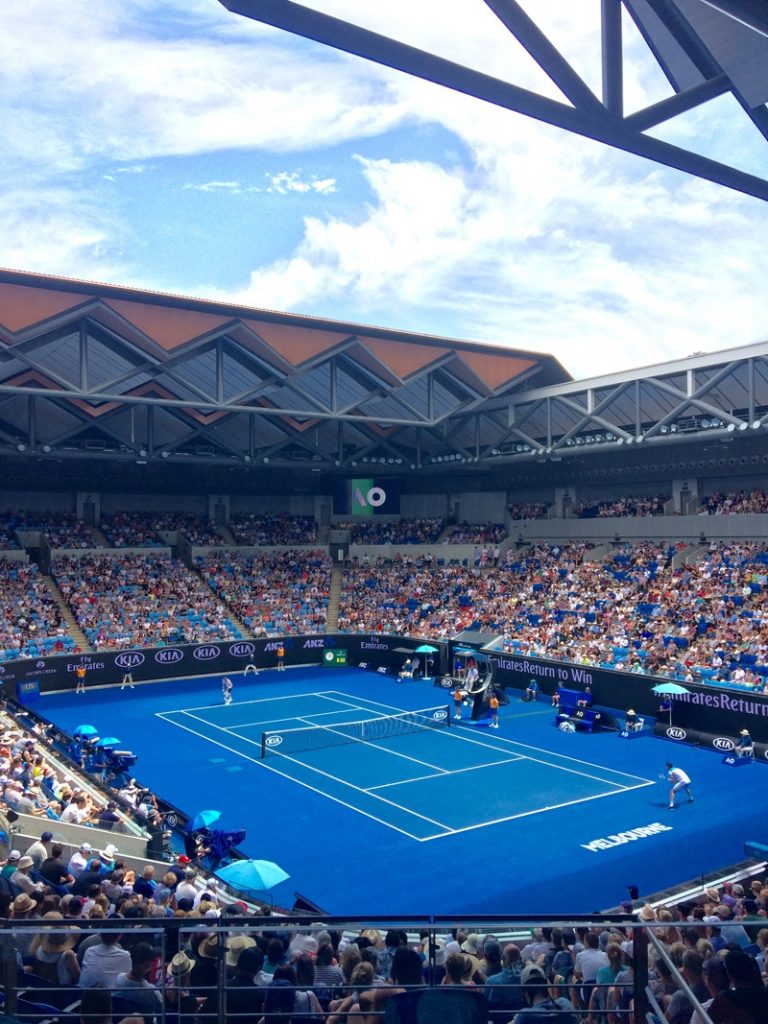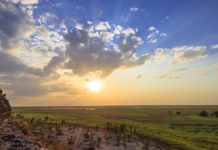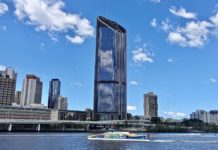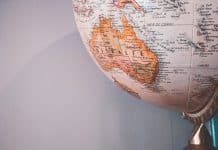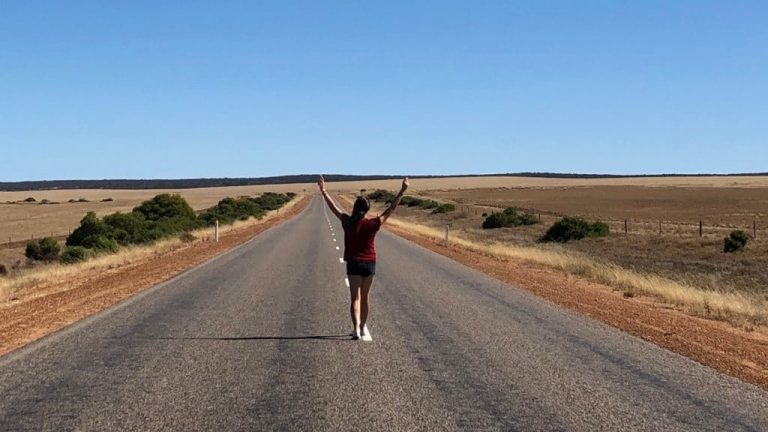
Do you want to get away from it all and discover gorgeous landscapes? The road from Adelaide to Melbourne will take you through stunning cliffs, beautiful beaches and breathtaking national parks. You will travel nearly 1000km inland to reach the state of Victoria and its capital. In this article, we share a road trip itinerary between the capital of South Australia and the cosmopolitan city of Melbourne.
Table of Contents
Preparing for your road trip
When to leave?
Adelaide’s climate is quite dry. In summer, temperatures can reach 30° while in winter, they drop to between 8 and 16°. The weather in Melbourne is known to be quite mixed. Its summers can be very hot and its winters quite cool (10°). The best times to go on a road trip between Adelaide and Melbourne without being too hot or too cold are probably spring (September to November) and autumn (March to May). If you want to do some whale watching on your trip, the best time of year is between June and October.
How much time will you need?
If you’re tight on time, you can do this road trip in 5 days. If you want to enjoy yourself without rushing, we recommend giving yourself a week. And if you have plenty of time, slow down and dedicate 4 days to the Great Ocean Road, 2/3 days to the Grampians and the same on Kangaroo Island, for a good ten day of a road trip in total.
Our recommended itinerary from Adelaide to Melbourne
Stage 1: From Adelaide to the Fleurieu Peninsula
From Adelaide, head south towards the Fleurieu Peninsula. After several kilometres on the Highway, from Normanville, the road winds through the rolling meadows of the waterfront. Enjoy the scenic drive through rolling hills and lush countryside. This pretty road leads to Cape Jervis, at the end of the peninsula. Along the way, stop at Rapid Bay, a picturesque spot where you can admire a gorgeous sunset with your feet in the water. Explore the surroundings and head to Second Valley, a small village a few kilometres away. After just a few minutes’ walk, you can reach beautiful coves.
From Cape Jervis, you can reach the famous Kangaroo Island. This island is home to a very diverse fauna and flora and is a peaceful heaven for the many kangaroos who have taken up residence there.
Then continue your journey to Victoria via the charming seaside towns of Victor Harbor and Port Elliot, which are quite lively in the summer season. Take the horse-drawn tram across the causeway to Granite Island and enjoy a walk around the island. From May to October, Southern Right Whales can be spotted off the coast.
Then take Highway A8 which will take you inland to the Grampians National Park. On the way, you can stop at Murray Bridge, then Horsham, the two main towns in the region.
Good to know:
- Victor Harbor is famous for its horse-drawn tram (dating from 1878). It connects Victor Harbor to Granite Island, where there is a colony of little penguins.
- You can enjoy a free camp located next to Lake Alexandrina, in Langhore Creek.
- Plan to stay 2 or 3 days on Kangaroo Island.
Optional stop: Mount Gambier
Victor Harbor to Mount Gambier -> 452 km
Located in the heart of the “Limestone Coast”, Mount Gambier is known for its volcanic and limestone features. Don’t miss Umpherston Sinkhole, a hole of greenery that could be compared to an oasis or the Blue Lake, a curiosity that is worth the detour. Indeed, every year at the beginning of November, the greyish water of the lake turns into a deep turquoise blue until the end of February, a real mystery! The same goes for Little Blue Lake, Blue Lake’s little brother.
Stage 2: The Grampians National Park
Fleurieu Peninsula to the Grampians -> 500km
Mount Gambier to the Grampians -> 160km
After travelling several hours across the long straight countryside of South Australia, you will arrive north of the Grampians National Park. With nearly 170,000 hectares of natural space, this region will amaze you with its landscapes as well as its many waterfalls and hiking trails. Once there, the Hollow Mountain is a walk of about 4km A/R, with a difficulty of ¾. In addition to the splendid view offered by this spot, especially on the Zero and Stapylton mountains, you can discover the Gulgun Manja Shelter, meaning “the hands of the young”. This cave was one of the places of expression of the Jardwadjali aboriginal community. The paintings represented a unique local art style. Today, there are mainly the handprints of these young children, probably symbolising the future and the sustainability of the community.
A veritable crossroads of the park, this small town is in the immediate vicinity of the main tourist attractions of the region. The MacKenzie, FishFalls and Broken Falls waterfalls are obviously unmissable (easily accessible from the car park), the Pinnacles hike (approximately 4 km A/R) will offer you a wonderful panorama of the valley and Lake Bellfield, with beautiful stages such as that of the Grand Canyon. Finally the Reed Lookout and the Balconies (about 1km walk) are not to be underestimated for the beauty of the view.
You can also attempt the ascent of Mount William, the highest point in the park at 1,167 meters above sea level. Follow the paved path to enjoy the 360 degree panorama once you reach the top.
Where to sleep
If you wish to spend several days in the park (recommended), you will find Plantation Campground, a charming and spacious free campsite in the heart of the forest with views of the mountains! You are situated less than 10 kilometers from Halls Gap! You can also find alternatives in youth hostels (Grampians Eco YHA) or eco-lodges (Aquila Eco Lodges).
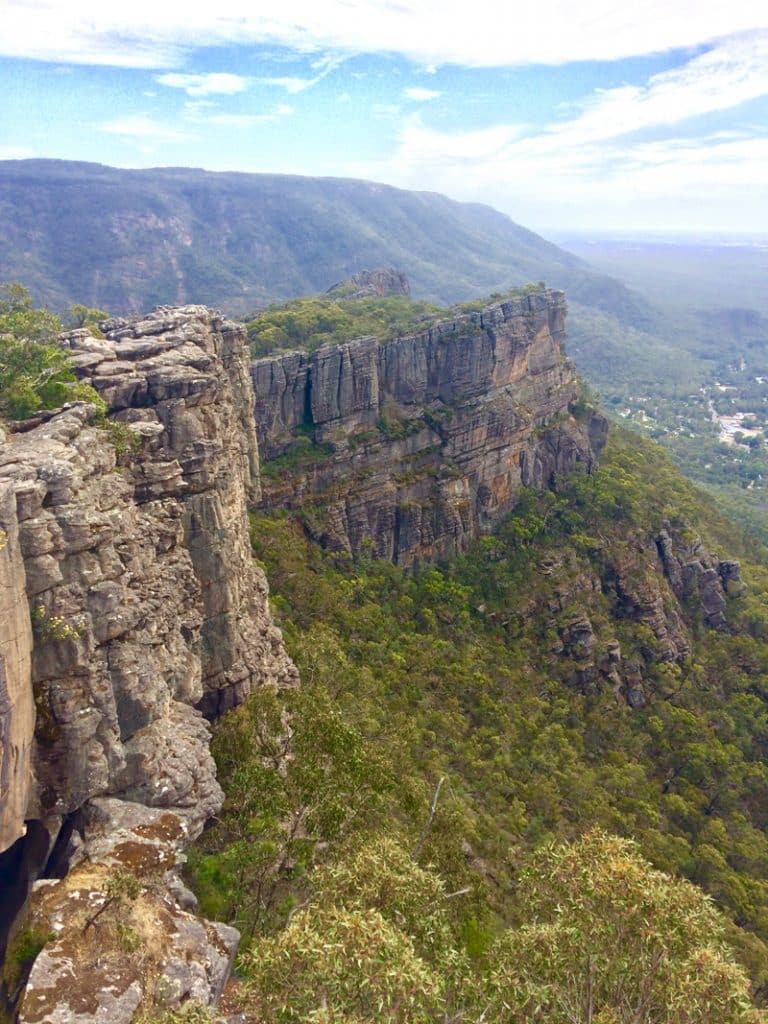
Stage 3: The Great Ocean Road, much more than a road!
Grampians to Great Ocean Road -> 100 km
The famous Great Ocean Road stretches almost 250 kilometers from Warrnambool to Torquay. Take at least three days to discover this iconic route. Between its spectacular but fragile limestone cliffs that have been sculpted over the years by the wind and the ocean (Bay of Martyrs, Bay of Islands, Razorback, The Grotto, London bridge, Twelve Apostles…), its extraordinary rivers and forests, from where you can observe multi-hundred-year-old trees, or its beaches so popular with surfers, this road is not lacking in assets.
Start with Port Fairy and its charming promenade along Moyne River. Then continue to the wild Griffits Island to observe the Wallabies. Continue your journey towards The 12 Apostles and if you have the possibility, make a stop at the nature reserve of Tower Hill which is home to koalas, emus, kangaroos and many other animals. This place is not well known to tourists and yet is worth a visit. Go there at the end of the day to maximize your chances of seeing wildlife.
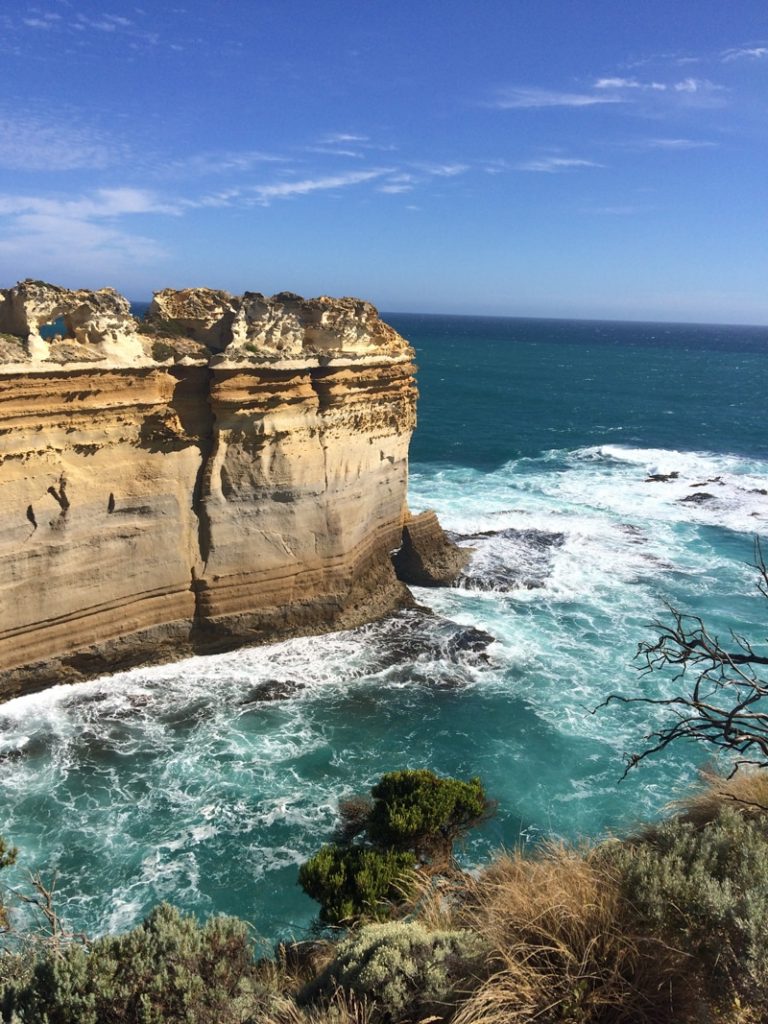
As you approach Port Campbell, you will find many spectacular natural sites such as the famous 12 Apostles. Then make a detour through Great Otway National Park before heading back to Apollo Bay and Lorne. Finally, stop in Torquay, the real Australian capital of surfing, and visit its museum which traces the history of the sport. Take the opportunity to stroll on the pleasant promenade along the beach.
The region features several unusual sites. Crossing Campground, located in Great Otway National Park, is a perfect example. After 4 kilometres on an unpaved and sometimes perilous road, you land in paradise. As the icing on the cake, you have the Triplet Falls (a few kilometres as the crow flies from the free camp). These are stunning waterfalls in the heart of the forest.
For a more detailed itinerary of the Great Ocean Road, see our dedicated article.
Top tips
- Sites like the 12 Apostles, London Arch, Martyrs Bay are easily accessible. Free car parks have been set up for tourists.
- Go to the site of the 12 Apostles at sunset when the sky takes on orange hues for an experience that will exceed all your expectations.
- Visit Teddy’s Lookout (near Lorne) for a superb view of the turquoise waters of the coast.
- Bell’s Beach near Torquay is famous for surfing.
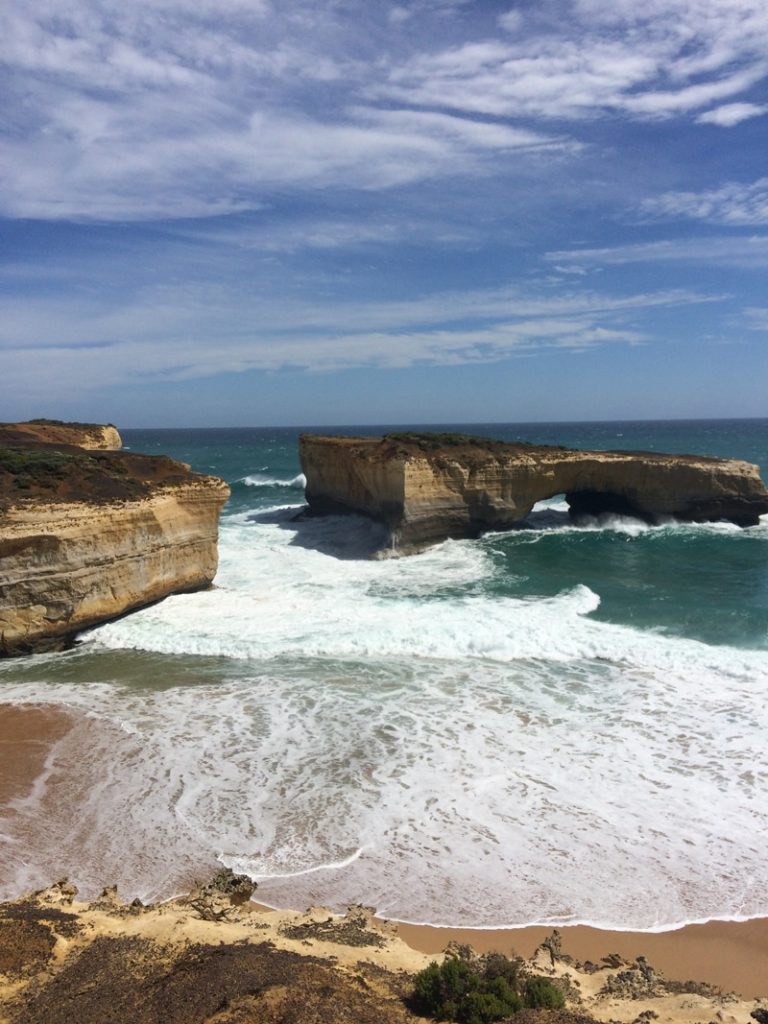
Step 4: Explore Melbourne
Great Ocean Road to Melbourne -> 280 km
This is the last straight line of your journey, after more than 1000 kilometres of road. We recommend you make a quick stop at the seaside resort of Geelong, a few kilometres before the cosmopolitan Melbourne. Capital of the state of Victoria, this city has plenty of must-sees not to be missed during your visit. Melbourne is renowned for its vibrant cultural scene and for its countless cafes, restaurants and bars.
Start with the city centre (CBD), where you can discover Hosier Lane, one of the most famous streets for its street art. There are also a number of “laneways” and “arcades”, where you will find a host of small restaurants and shops.
Also, don’t miss Federation Square. This large esplanade, near Flinders Street Station and Saint Paul’s Cathedral, is THE cultural place in the city centre. This is where you can visit museums and discover great restaurants and cafes. You will find there, amongst others, the tourist office, the Ian Potter Centre (first gallery dedicated to Australian art), the Australian Centre for the Moving Image (presenting the moving image in all its forms and its evolution) and the National Design Centre specialising in Australian design.
And to go green, head to the Botanic Garden. World famous, you will find in the botanical gardens more than 50,000 plants and 12,000 different species. Each year, they welcome 1.6 million visitors who come to admire the Australian flora. Don’t forget to visit the Shrine of Remembrance, a monument erected in honour of the Australian dead during the 1st World War.
Our highlights
- If you’re in Melbourne in January, don’t miss the Australian Open. This sporting competition will mark the end of a memorable stay in South Australia.
- The district of St Kilda, which has seaside resort vibes, is nice if you want to get away from the high rise buildings. St Kilda also offers a beautiful view of the Melbourne skyline.
- On a rainy day, head to the ACMI (Australian Center for the Moving Image) – a fun, interactive and free museum.
